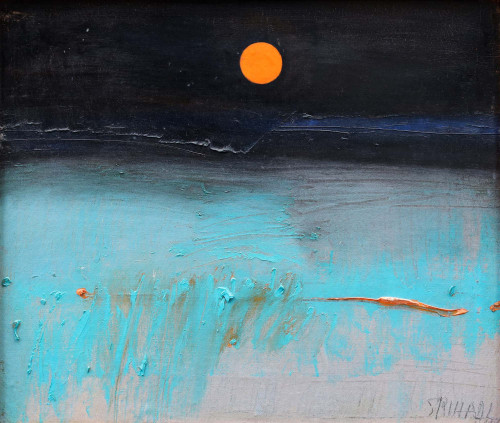
The history of painting encompasses rich movements and styles that have evolved over centuries, each leaving a permanent mark on the canvas of art history. One of the earliest and most influential movements was the Renaissance, which emerged in 14th-century Italy. It marked a rebirth of classical ideals, focusing on realism, perspective, and humanism. Moving forward, the 19th century witnessed the birth of Impressionism, a revolutionary movement that challenged traditional techniques. Impressionism sought to capture fleeting moments of light and atmosphere through loose brushwork and vibrant colors.
In the 20th century, the art world experienced an explosion of diverse movements. From the bold, geometric forms of Cubism pioneered by Pablo Picasso and Georges Braque to the dreamlike, subconscious realms explored by Surrealists like Salvador Dalí and René Magritte, artists pushed the boundaries of representation, perception, and meaning. Movements like Abstract Expressionism, Pop Art, and Minimalism further revolutionized painting, showcasing the breadth of artistic experimentation and innovation in capturing the human experience.
In Indonesia, Expressionism is a movement that developed in the early 20th century in Indonesia. The roots of Expressionism in Indonesia can be traced back to the early 20th century when Indonesian art was influenced by Dutch colonialism. The country's struggle for independence from colonial rule profoundly impacted its art scene. Expressionist painters frequently disregarded realistic perspectives and proportions in order to convey deeper emotions. They often prioritize imperfection and chaos in their art with emotional elements.
Characteristics in Expressionism Painting in Indonesia
Expressionism in Indonesian painting is characterized by these two main distinct features:
Emotional Intensity
Emotions take center stage in Indonesian Expressionism. Artists sought to express profound feelings—pain, joy, anguish, and hope—through exaggerated forms, expressive colors and stroke. One of the primary features of expressionist painting is the portrayal of intense and profound emotions in artworks. Expressionist painters aimed to convey their personal feelings or universal human emotions through their paintings. Most Indonesian expressionist painters depict their surroundings based on the atmosphere and emotions they feel, rather than focusing solely on the objects. Often, these paintings appear to be quite dramatic.
Not Focusing on Details
Many Indonesian Expressionist artists used their canvases as a platform to comment on social issues and favorite objects. Their works became a mirror reflecting the struggles, dreams, and resilience of the Indonesian people, addressing themes of poverty, cultural identity, and social injustice.
Expressive and dynamic strokes characterize Indonesian Expressionism. When the painters find inspiration to paint, they instinctively apply it to the canvas. The colors used may not be the exact match to the original object, and the shapes may differ, as they prioritize capturing the essence and meaning of the painting. Artists utilized these techniques to infuse their works with energy, passion, and a sense of spontaneity.
Two Prominent Indonesian Artists for the Expressionism Style:
Affandi (1907-1990)
Affandi, an iconic figure in Indonesian art, delved deeply into Expressionism. His works portrayed raw emotions and vivid expressions, guided directly with his fingers, often using bold color, to convey the intensity of human feelings. His most well-known artworks such as self portrait series, banyan trees, eiffel tower, & borobudur. Affandi's influence as a Maestro in Indonesia has undoubtedly inspired numerous other artists, including Men Sagan and Maria Tjui, whose paintings' characteristics akin to the Maestro.

Lot 001 | AFFANDI | Plowing Rice Fields, 1979 |Oil on canvas: 140 x 200 cm
Est. SGD 134,000 - 170,000

Lot 109 | AFFANDI | Fisherman, 1972 | Oil on canvas: 99 x 128 cm
Est. SGD 98,000 - 125,000
Srihadi Soedarsono (1931-2022)
With over five decades of experience in the art world, Srihadi Soedarsono is considered one of the greatest Indonesian painters. As a Javanese, he was educated based on the principles of Central Javanese ethics. His life experiences, including his time at university, have helped him discover his true self as an artist. He began his journey in Solo, where he learned about aristocratic Javanese society. Later, while studying at ITB in Bandung, he was exposed to the western-oriented in education system. His experiences studying in America also helped shape his strong character and broad outlook as an artist.
What sets him apart from others are the way he uses colors and strokes to express energy and contemplation. Srihadi employs vibrant, bright colors to infuse and convey energy into his work, especially in his dancer-themed paintings. Meanwhile, to convey contemplation, he uses darker colors into his paintings.

Lot 008 | SRIHADI SOEDARSONO| Purnama Bulan Kuning, 1977 | Oil on canvas: 47.5 x 55 cm
Est. SGD 13,000 - 16,000

Lot 009 | SRIHADI SOEDARSONO| Legong Condong-The Energy of Love, 2015 | Oil on canvas: 150 x 150 cm
Est. SGD 88,000 - 107,000

Lot 018 | SRIHADI SOEDARSONO| Bedoyo Ketawang-The Spiritual Dance, 2001 | Oil on canvas: 100 x 100 cm
Est. SGD 43,000 - 54,000
Global Auction is pleased to offer a selection of other expressionist paintings for those who want to enjoy or collect paintings of this style. Our art previews and auctions always feature a variety of paintings of different styles such as expressionism, impressionism and many more. Discover more by visiting our offline auction preview. Mark your date for January 27th 2024 at 4.00 PM (JKT) and join our online live auction. Don’t hesitate to click here for more information and visit our social media for more updates!
Source:
Faaizah, N. (2023, September 7). Lukisan Ekspresionisme: Pengertian, Ciri, Contoh dan Tokohnya. Retrieved from https://www.detik.com/edu/detikpedia/d-6954014/lukisan-ekspresionisme-pengertian-ciri-contoh-dan-tokohnya
Invaluable Blog. (2021, June 4). Art History Timeline. Retrieved from https://www.invaluable.com/blog/art-history-timeline/










